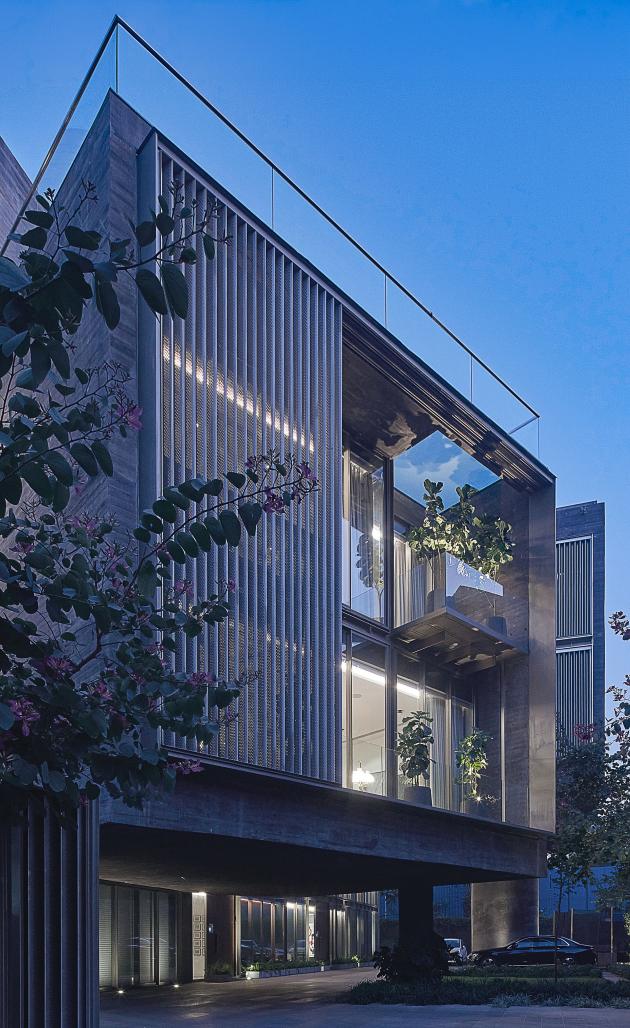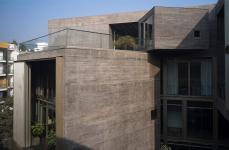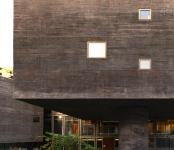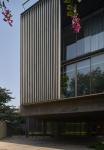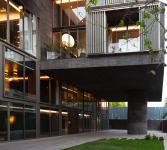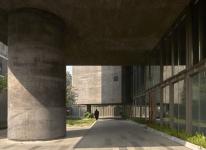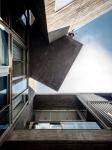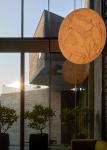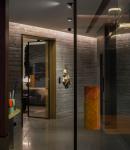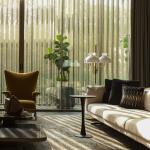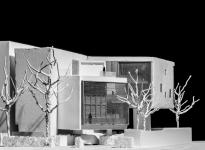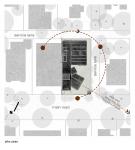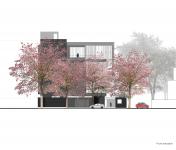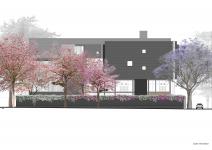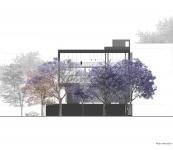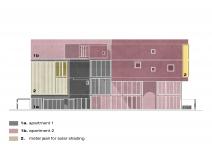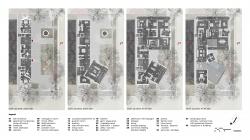Today, under immense pressure from the ever-increasing population and congestion of the urban fabric, the window for a "regenerative" built environment seems to be a distant dream. However, cities are trendsetters for emerging orders that incite meaningful paradigms and could even foster a change in future building regulations. Such has been the case in the past with the mandatory stilt parking requirement for plots below 1000 sqm, introduced in Delhi a decade ago, which arguably has posed a challenge to the development of a house that was once connected to the ‘ground’ and provided a perceivable balance between open and built-up areas.
This project critically addresses the monotony that this very recent urban regulation has created while reinterpreting an Indian home for a joint family with shared living. The initial idea was to develop the reclaimed ground level as a lush landscaped garden, with small meandering paths, extended as areas for contemplation/meditation, as outdoor spaces for family gatherings and large events, that would qualitatively reconcile with the otherwise colossal building mass. This vision, however, on the advice of the clients, was challenged, and part of the areas was finally adopted for all practical purposes as part of the home office as well as supporting services, pushing all entertainment areas to the first, second, and third floors.
A dance of Cubes - Two interlocked apartments, the front duplex for the parents, and a rear triplex for their daughter and her children, derive strong reference from the form of a ‘Mashrabiya,' traditionally an integral part of the Arabic lifestyle, albeit in a new avatar. The proposed three juxtaposed insulated concrete cubes of varied sizes engage with the external environment, with the street, create space below, above, and around them, frame the sky, and are in constant tension. Yet, these ‘sculptures’ maintain the indoor privacy of the occupants and ensure that during the day, parts of the large exposed building surfaces are shaded. Traditionally, ‘Mashrabiya’ were enclosed with carved latticework in wood, while the proposed ‘Jalis’ were constructed in lightweight metal to control daylight, ventilation, reduce energy consumption, and create beauty.
2018
2021
Completion date: April 2021
Plot area: 833 sqm
Built-up area: 1630 sqm
Design team: Verendra Wakhloo, Ankit Jain, Ankit Tomar, Gautam Tanvar, Apurva Tripathi, Amrita Walia, Abhishek Chauhan (3D Visualizer), Mukesh Kumar (Model Maker)
Structure: Optimal Consultancy Services Pvt Ltd/ Delhi
Electricals: Lirio Lopez/ Delhi
Interior design: Rajiv Saini & Associates/Mumbai
Landscape design: Matra architects
Contractors: Incredible Housing Developers Ltd/ Delhi
Brass work: Ferrous Designs/ Delhi
